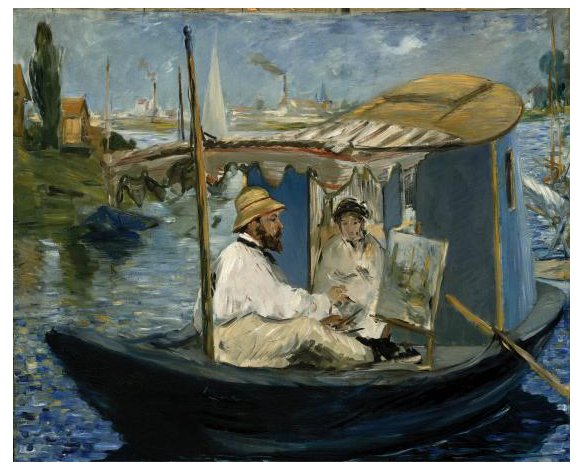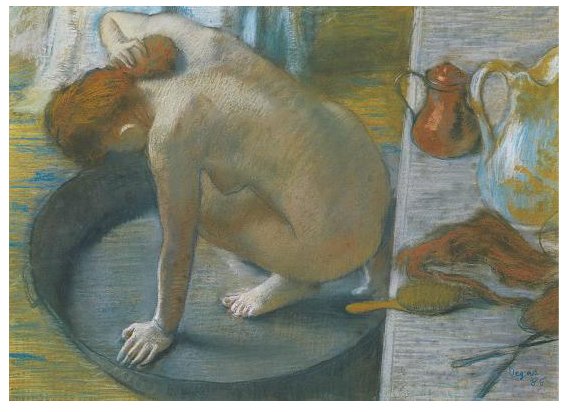RESPONSE 1
· Respond to at least two colleagues by expanding on their posts with an explanation of the bicultural conflict and tension, experienced by both the social work intern and Helen, as a result of their ethnic and racial identities.
· Then, explain how you, as a social worker, might address Helen and her family’s bicultural socialization needs, given what your colleague described.
Colleague 1: Lea
Introduction
In order to provide competent and effective care, the social worker must be able to adapt and personalize treatment to the individual. When working with individuals from different ethnocultural backgrounds, a balance between cultural sensitivity and empirically proven methodology must be found and utilized (Bernal, Jiminez-Chafey, and Rodriguez, 2009). In the case of The Petrakis Family (Plummer, Makris, and Brocksen, 2014), the social worker is faced with providing services to Helen Petrakis taking into account her Greek heritage, culture and belief systems.
Helen’s Cultural Influences:
For Helen, family is “everything.” She reports the social work intern a number of identifiers of her ethnic identity. She states that she is Greek and practices the Greek Orthodox religion. From there she expresses her cultural practices by explaining that she, as the mother, is the primary caregiver to her husband, her children, and her mother-in-law. In addition to caring for the family, she also holds down a full-time job and cooks and cleans. She also relates to the intern that she and her husband support their adult children because they do not believe in taking money from them. Helen does not seem to think this is anything other than “how things are done.”
Intern’s Perception of Helen
The Intern appears to be surprised by the many roles that Helen plays in her family. She states that she understands why Helen would be showing symptoms of being overwhelmed. Though we are not informed of the cultural background of the social work intern, it is made clear that she is surprised by the cultural practices related by Helen. She is most likely a “modern” woman subscribing to the Anglo-based norms, values, and customs of the ethnic minority. It might be assumed that the intern was raised in a society where children are not supported by their parents indefinitely, working women share family responsibilities with their partners, and aging parents are cared for in retirement homes, or by in-home care. Those values held by Helen and her family are devalued by the dominant culture (the intern), therefore a “deficiency formulation” between the intern and Helen that may affect the efficacy of services provided to Helen (Robbins, Chatterjee, and Canda, 2012).
Dual Perspective Model
The social work intern will have to address Helen’s issues in a way that is in line with her cultural and ethnic identity while alleviating the stress and anxiety she is experiencing. In this case, the social work intern can utilize the Dual Perspective model to assist Helen in overcoming the obstacles she faces. Applying assessment skills in order to gain an understanding of the norms, values, and behaviors, as understood by Helen, will inform both the intern and Helen of the expectations she has placed on her by herself, her family, and her ethnic community. Another skill of importance will be assisting Helen to identify her nurturing (family, immediate community) and sustaining (society, educational, service) support systems so that she and Helen can advocate for and work toward additional services to assist in filling in the gaps. Furthermore, the intern can help identify skill building opportunities such as educational programs and cultural studies to help Helen “develop the flexibility necessary” to manage her cultural beliefs while caring for herself as well (Robbins, et. al., 2012).
References:
Bernal, G., Jiminez-Chafey, M. I., & Domenech Rodriguez, M. M. (2009). Cultural adaptation of treatments: A resource for considering culture in evidence-based practice. Professional Psychology: Research And Practice, 40(4), 361–368.
Plummer, S.-B., Makris, S., Brocksen S. (Eds.). (2014). Sessions: Case histories. Baltimore, MD: Laureate International Universities Publishing.
Robbins, S. P., Chatterjee, P., & Canda, E. R. (2012). Contemporary human behavior theory: A critical perspective for social work (3rd ed.). Upper Saddle River, NJ: Allyn & Bacon.
Collegue 2: Dalicia
A summary of the cultural influences depicted in the video and explain how Helen and the intern’s ethnic and racial identities might be relevant to their interaction. In the video Helen stated that she is from a Greek family that is very family orientated which means that Helen is the one that supposed to take care of everyone when they need help or is sick. Helen does seem overwhelm but is okay with being overwhelm because she is helping her family out. This may cause a concern with their interaction because the intern may not come from a culture where one individual has to take care of everyone and everything. Having this concern can cause a disagreement between the intern and Helen because Helen may feel that what she is doing for her family that the intern should understand but due to the intern culture she may not be able to understand.
Explain any video evidence of the intern’s perception of Helen’s culture and further explain how the intern’s cultural perception might reflect her level of intergroup competence. From the video the intern really do not know anything about the Greek culture so her perception of Helens culture is not clear. Due to intern perception of not being clear in the video it was observed that the intern was trying to write down everything Helen was saying even the things that may not have been important and not really hearing what Helen is actually saying (Laureate Education, 2013). Also feel that since the intern do not know anything about the culture it would be hard for the intern to adapt to Helen issue and family base on the intern own values and beliefs.
Explain what social work skills the intern might use to apply the dual perspective model in her approach to Helen. Robbins, Chatterjee, & Canda (2012) stated that “theterm culture change has traditionally referred to the modifications, revisions, and new manners of expression that result from the process of interaction between cultures.”One social work skill the intern need to use to apply the dual perspective model in her approach with Helen is to first get an understanding of the Greek culture their history and background. This would help the intern understand Helen more and have more understanding about Helen family. Also the intern should also reframe from being bias and have an open mind; every culture is not the same. Another social work skill the intern should use is to ask questions especially questions for the things she do not understand; just agreeing with the client will make it hard to help the client without having a clear understanding.
Reference
Robbins, S. P., Chatterjee, P., & Canda, E. R. (2012). Contemporary human behavior theory: A critical perspective for social work (3rd ed.). Upper Saddle River, NJ: Allyn & Bacon.
RESPONSE 2
Respond to at least two of your colleagues’ posts from the opposite group about their treatment choice by:
· Discussing any additional important information that should be considered
· Suggesting an alternative therapy and supporting your suggestion with evidence from the Learning Resources or other scholarly sources.
Colleague 1: Dawn
Treating Psychotic Disorders
In the case of Ralph who was diagnosed with Schizophrenia, he began to gain a lot of weight and what he thought was a tick (Tardive Dyskinesia, 2017). Taking antipsychotic medication for long periods of time can cause tardive dyskinesia (Tardive Dyskinesia, 2017). Tardive dyskinesia will cause random movements of muscles in different parts of the body (Tardive Dyskinesia, 2017). Some treated with antipsychotic medications will see the sign of Tardive Dyskinesia when taking Merrill for long periods of time (Tardive Dyskinesia, 2017). The current psychiatrist can test for this with “The Abnormal Involuntary Movement Scale” first they can decrease the medication they are currently taken (Tardive Dyskinesia, 2017). If that does not work then try and switch the medication to a milder medication such as Abilify (What Is Abilify ?, 2017).
Potential negative side effects with any of the antipsychotic medication are side effects and may not be right for the person. Most of the medication can cause side effects finding the right medication that will work for the person. Outweigh the person symptoms and the side effects to find the right treatment for them. Identify symptoms that may not be relieved by this treatment because Ralph continued to get the side effects and symptoms when off the medication. It seems as he should be on a medication if the symptoms are increasing worse but he needs to weigh the developing side effects of the Tardive Dyskinesia. Clinically with medication along with psychotherapy have shown to be more effective (Preston, O’Neal, Talaga, 2017).
One potential ethical concern related to Ralph’s treatment the Centers for Disease Control (2012) and Prevention research shows too often a client was inappropriate prescribed (Smith, 2012 ). Ralph could have given a test to see if the medication was given him negative effects related to the medication long before he started showing signs. Not to over prescribe or use lesss alternative medications for mental health (Smith, 2012). The role of a mental health professional when the patient is stabilized on their medication is to monitor and give the “The Abnormal Involuntary Movement Scale” on a yearly basis. Also to ask questions and ensure the patient is taking the medication as prescribed. Also to monitor if there is anything else going on and they are not inappropriate prescribed medication.
References
Laureate Education (Producer). (2012g). Psychotic disorder case study: Ralph [Video file]. Baltimore, MD: Author.
Lieberman, J. A., Stroup, T. S., McEvoy, J. P., Swartz, M. S., Rosenheck, R. A., Perkins, D. O., … Hsiao, J. K. (2005). Effectiveness of antipsychotic drugs in patients with chronic schizophrenia. New England Journal of Medicine, 353(12), 1209–1223.
Retrieved from the Walden Library databases.
Preston, J. D., O’Neal, J. H., & Talaga, M. C. (2017). Handbook of clinical psychopharmacology for therapists (8th ed.). Oakland, CA: New Harbinger.
Colleague 2: Amber
Antipsychotic are potential dopamine blockers and were called neuroleptics and caused neurological issues these were the first generation of antipsychotics, the second generation of antipsychotics cause minimal neurological issues and have been known to reduce the extrapyramidal effects by incorporating a less potent antipsychotic (Preston, O’Neal, & Talaga, 2017). Perphenazine is an alternative that can be given to Ralph; it is a second generation antipsychotic that is used to treat schizophrenia. The benefit is perphenazine given in low dosage has the potential to be as effective as the first generation of antipsychotics but does not have as harsh of side effects (Preston, et. al, 2017). This would be helpful to Ralph who still wants the tics to stop. Perphenazine helped diminish the frequency of extrapyramidal side effects (Lieberman, et al., 2005).
There are as with any medication the possibilities of side effects. The side effects of perphenazine include arm or leg jitters, confusion, seizures, drowsiness, and weakness. There is always the potential that the antipsychotic medication will have a negative impact on the person and make the schizophrenia symptoms worsen( Lichtblau, 2011). There is also the possibility of unpleasant withdrawal symptoms for those individuals who may have taken perphenazines for a long period of time (Preston, et al, 2017).
A mental health professional can use this information to help the client make an informed decision regarding the use of this medication. It is the responsibility of the mental health care professional to make sure the client has all the information needed to make the best decision based on accurate information (NASW, 2013).
The mental health professional should communicate with other professionals but only when a written consent form has been signed by the client. Upholding the client’s right to privacy is very important and obtaining permission to release information to other health care providers is just as important. This communication can help ensure the client is getting the best treatment and that all the professionals are on the same page. This can help eliminate possible medication interactions and reduce side effects (Lieberman, et al, 2005).
References
Lieberman, J. A., Stroup, T. S., McEvoy, J. P., Swartz, M. S., Rosenheck, R. A., Perkins, D. O., … Hsiao, J. K. (2005). Effectiveness of antipsychotic drugs in patients with chronic schizophrenia. New England Journal of Medicine, 353(12), 1209–1223.
Lichtblau, L. (2011). Psychopharmacology demystified. Clifton Park, NY: Delmar, Cengage Learning. Chapter 4, “Antipsychotic Pharmacotherapy” (pp. 51–62)
Laureate Education (Producer). (2012g). Psychotic disorder case study: Ralph [Video file]. Baltimore, MD: Author.
National Association of Social Workers. (2013). Code of ethics of the National Association of Social Workers Washington, DC. NASW Press.
Preston, J. D., O’Neal, J. H., & Talaga, M. C. (2017). Handbook of clinical psychopharmacology for therapists (8th ed.). Oakland, CA: New Harbinger
Manag. A.J.(2005). Anxiety Disorders in the 21st Century: Status, Challenges, Opportunities, and Comorbidity With Depression
****EACH RESPONSE NEEDS TO BE 1/2 PAGE****




